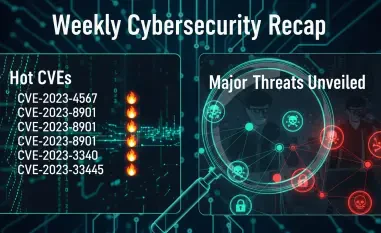In the ever-evolving world of cybersecurity, few threats are as insidious as ransomware campaigns that exploit user trust in well-known brands. Today, we’re sitting down with Malik Haidar, a seasoned cybersecurity expert with a deep background in threat intelligence and analytics. With years of experience protecting multinational corporations from sophisticated cyberattacks, Malik has a unique perspective on integrating business strategies with robust security measures. In this interview, we’ll explore the intricate details of a recent ransomware campaign involving fraudulent certificates and deceptive tactics, uncover the methods used by threat actors to deceive users, and discuss the critical steps taken to disrupt such threats. We’ll also dive into broader lessons for organizations and individuals on staying safe in an increasingly dangerous digital landscape.
Can you walk us through the recent ransomware campaign involving Vanilla Tempest and the use of fraudulent certificates?
Absolutely, Stephen. This campaign, tied to a threat actor known as Vanilla Tempest, was particularly crafty. They leveraged over 200 fraudulent certificates to sign malicious binaries, making their malware appear legitimate. These certificates were embedded in fake setup files mimicking popular software, which tricked users into downloading harmful payloads. The goal was to deploy the Rhysida ransomware, a devastating strain that locks up systems and demands payment for decryption. What’s alarming is how these certificates lent an air of authenticity to the attack, bypassing initial security checks and exploiting user trust.
How did the attackers manage to make these fake setup files look so convincing to unsuspecting users?
The attackers were meticulous in their approach. They created fake Microsoft Teams setup files, naming them things like MSTeamsSetup.exe, and hosted them on domains that closely mimicked the real thing, such as teams-download.buzz or teams-install.run. At a glance, these names and sites could easily fool someone in a hurry. They preyed on the familiarity of a widely used tool like Teams, knowing that users often don’t double-check the source when they see a recognizable name or logo.
What specific tactics did Vanilla Tempest use to lure users to these malicious download sites?
One of their primary methods was search engine optimization poisoning, or SEO poisoning. Essentially, they manipulated search engine results on platforms like Google and Bing to push their fake websites to the top of the list when users searched for Microsoft Teams or similar software. By exploiting user trust in search results, they redirected people to these bogus sites, where they’d download the malicious installer without realizing the danger.
What kind of malicious software was delivered through these fake files, and what was its impact?
Once downloaded, these fake setup files deployed a backdoor known as Oyster, sometimes called Broomstick or CleanUpLoader. This backdoor acted as a gateway, allowing the attackers to gain persistent access to the victim’s system. From there, they could escalate their attack, ultimately deploying the Rhysida ransomware. The impact is severe—ransomware like Rhysida encrypts critical files, rendering systems unusable until a ransom is paid, if the data can even be recovered at all.
Can you explain how Vanilla Tempest abused code signing services to further their attack?
Certainly. They exploited reputable code signing services like Trusted Signing, SSL.com, DigiCert, and GlobalSign to digitally sign their malicious tools. These services are meant to verify the authenticity of software, so when a user or system sees a signed file, it’s often trusted by default. By abusing these services, the attackers made their fake installers appear safe, bypassing many security filters and user suspicions. It’s a significant breach of trust in the ecosystem, highlighting how even trusted mechanisms can be weaponized.
What actions were taken to disrupt this ransomware campaign, and how effective were they?
The response was swift once the campaign was detected in late September 2025. By early October, over 200 fraudulent certificates were revoked to prevent further misuse. Security solutions were also updated to flag the signatures tied to the fake setup files, the Oyster backdoor, and Rhysida ransomware. These steps significantly disrupted the attack chain, reducing the risk to users and limiting the threat actor’s ability to spread their malware. It’s a strong example of proactive defense, though constant vigilance is still needed as attackers adapt quickly.
Can you tell us more about Vanilla Tempest as a threat actor and their history in the cybercrime world?
Vanilla Tempest, also known by aliases like Vice Society, Vice Spider, or Storm-0832, is a financially motivated group that’s been active since at least July 2022. They’re notorious for deploying a variety of ransomware strains over the years, including BlackCat, Quantum Locker, Zeppelin, and now Rhysida. Their focus is on maximizing profit, often targeting organizations where downtime or data loss can force a quick payout. Their persistence and ability to evolve tactics make them a significant player in the ransomware landscape.
What broader lessons can organizations and individuals take away from this incident to protect themselves online?
The biggest takeaway is the importance of source verification. Always download software from official websites or verified app stores, and avoid clicking on links or ads in search results, no matter how legitimate they seem. For organizations, it’s critical to educate employees about these risks and implement robust security tools that can detect and block malicious signatures. Additionally, maintaining regular backups and having an incident response plan can mitigate the damage if an attack does slip through.
Looking ahead, what is your forecast for the evolution of ransomware tactics in the coming years?
I expect ransomware tactics to become even more sophisticated, with attackers increasingly exploiting trusted systems like code signing services or cloud platforms to blend in with legitimate traffic. We’ll likely see more use of social engineering, tailored to specific industries or even individuals, to maximize impact. On the flip side, advancements in AI and machine learning could help defenders detect anomalies faster, but it’s a cat-and-mouse game. The key will be staying proactive—building resilient systems and fostering a culture of cybersecurity awareness to stay one step ahead of these threats.













